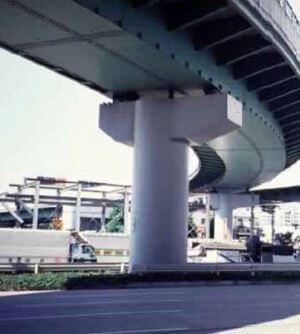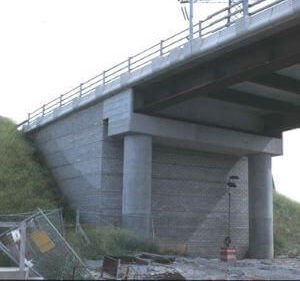What Is Pier?
Important Point
This Piers provide vertical supports for spans at intermediate of different points and perform both main functions: transferring vertical superstructure loads to the foundations and resisting horizontal forces acting on this bridge.
Although piers are designed to resist vertical loads, it is becoming common to design piers into resisting high lateral loads caused by seismic events. Even in some low seismic areas, designers are paying more attention to this ductility aspect of the design.
These Piers are predominantly constructed using reinforced concrete. This Steel, to a lesser degree, is also used for piers. The Steel tubes filled with concrete columns have gained more attention recently.
The piers or columns for conventional bridges, such as grade separations, overcrossing, overheads, underpasses, and simple river crossings. Reinforced concrete columns will be discussed in detail, while steel and composite columns will be briefly discussed.
Substructures for arch, suspension, segmental, cable-stayed, and movable bridges are excluded from the substructures for some of these special types of bridges.
Types of Piers
The main two types of piers are as follows.
#1. Solid Piers.
- Solid Masonry Piers
- Solid Reinforced Concrete Piers
#2. Open Pier.
- Cylindrical Piers
- Column Piers or Column Bent
- Pile Pier or Pile Bents
- Trestle Pier or Trestle Bent
- Masonry Piers
- Mass Concrete Piers
- Reinforced and Prestressed Concrete Piers
- Fixed Piers
- Hammerhead or Cantilevered Piers
- Special Shaped Bent
- V-Shaped Concrete Pier
Also, read: What Is Raft Foundation | Types of Footing | Detail of Raft Footing
What Is Abutment?
A bridge abutment is a substructure that supports one terminus of the superstructure of a bridge and, at the same time, laterally supports the embankment which serves as an approach to the bridge.
For a river bridge, the abutment also protects the embankment from scouring of the stream. Bridge abutments can be made of masonry plain concrete or reinforced concrete.
Types of Abutments
5 types of abutments are as follows.
- Closed Abutment
- Stub or Perched Abutment
- Pedestal or Spill-through Abutment
- Integral End Bents
- Mechanically Stabilized Abutment
Difference Between Pier and Abutment
| Sr.No. | Detail | Pier | Abutment |
| 1 | Support | The intermediate supports for the superstructure of a multi-span bridge are known as piers. | The end supports of a bridge superstructure are known as abutments. |
| 2 | Material | A pier essentially consists of two parts i.e. a column shaft and the foundation. | Abutments are built either with brick masonry, stone masonry, mass concrete, precast concrete blocks or RCC. |
| 3 | Function | The function of a pier is to transmit the load from the bridge to the underneath sub-soil. | Abutments support the ends of the bridge and transfer the loads from the superstructure into the ground. |
| 4 | Types | Types of Piers • Solid Piers • Open Pier |
Types of Abutments • Closed Abutment • Stub or Perched Abutment • Pedestal or Spill-through Abutment • Integral End Bents • Mechanically Stabilized Abutment |
Difference Between Pier and Abutment:
Pier are the internal supports of the bridge. Abutments are the ends supports of the bridge. Pier can use more than two in bridge construction. Pier are constructed between the abutments.
Like this post? Share it with your friends!
Suggested Read –
- Abutment Bridge Definition
- Hip Roof Vs Gable Roof | What Is Gable Roof | What Is Hip Roof
- Difference Between Formwork, Shuttering, Centering, Staging & Scaffolding
- Difference Between Plane Surveying and Geodetic Surveying |What Is Geodetic Surveying | What Is Plane Surveying
- Difference between Construction Joint and Expansion Joint | Types of Movement Joints | Why Required Movement Joint In Concrete
- What Is Superelevation | Superelevation Definition | Superelevation Formula | Calculation of Superelevation in Roads
Originally posted 2020-10-13 01:39:51.




Leave a Reply